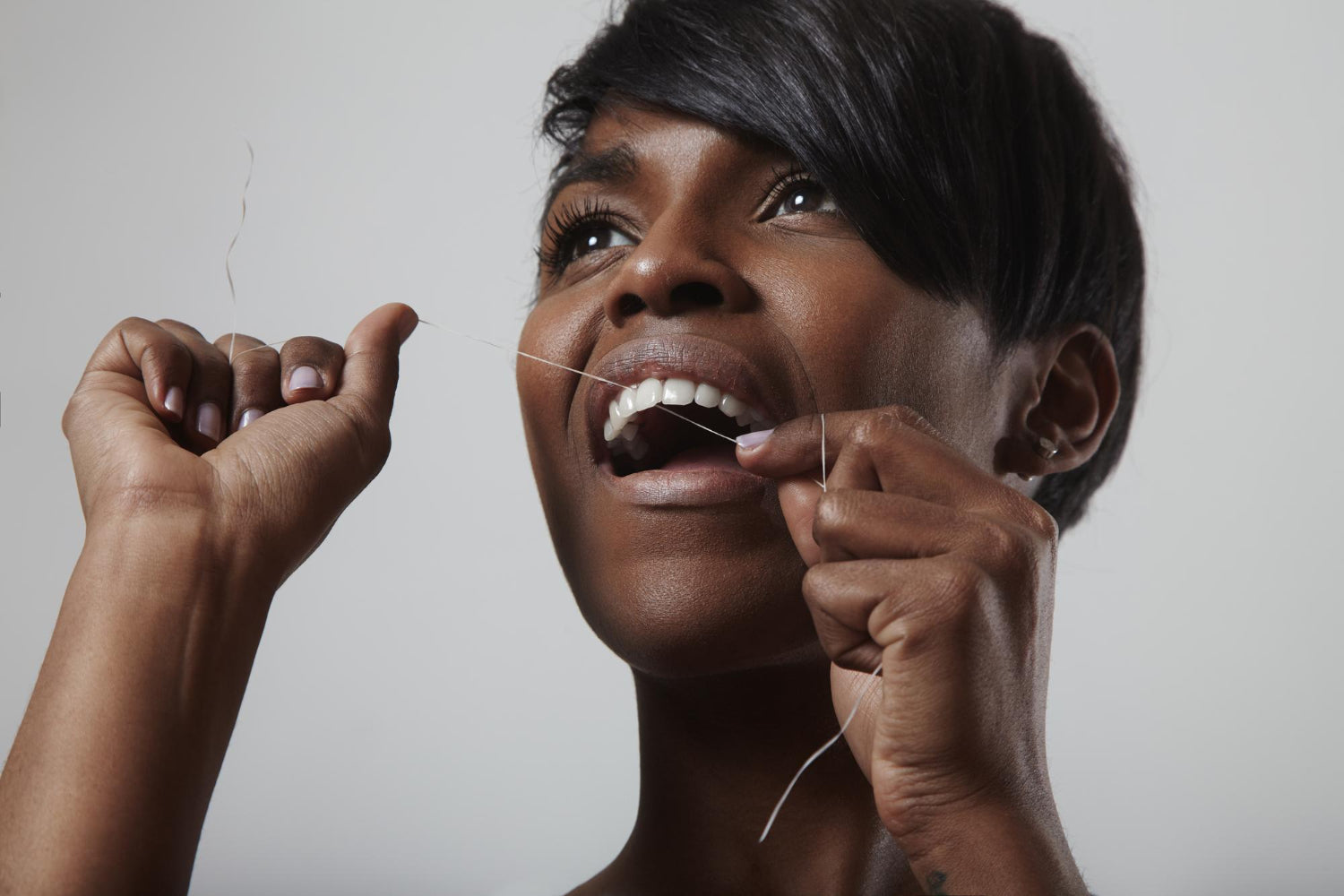Careful oral hygiene not only protects the teeth, but also promotes our overall health. Bacteria from the mouth can enter the body via blood and lymph channels and cause inflammation. This can even affect the heart.
A study by the University of Helsinki concluded that the risk of coronary heart disease is three times higher for people with periodontitis, i.e. inflammation of the gums.
For careful oral hygiene, brushing teeth twice a day is the key. In addition, it is important to floss at least once a day. Why? Because your teeth have four sides, and in the case of the molars there are even five with the chewing surfaces. With a toothbrush, however, you can only reach two or three sides. The interdental spaces, i.e. the sides where the teeth meet, are poorly reached or not reached at all when brushing with a toothbrush. This is where food debris tends to collect, leading to plaque and tooth decay.
Please remember that the interdental spaces make up one third of the dentition. If you want to avoid unhindered accumulation of harmful bacteria, you can't avoid flossing.
Which floss is the right one?
You will find different types of dental floss on the shelves of supermarkets and drugstores. There are waxed and unwaxed floss, fluff floss, tapes, flossettes and interdental brushes.
Above all, it is important that you use dental floss. Which one you use is of secondary importance. Just try out which floss you get along with best. Experience has shown that beginners like to use waxed floss because the waxed surface glides better through the interdental spaces and is therefore easier to handle. Unwaxed floss or floss floss fibers more and therefore glides less well. Due to the rough surface, the cleaning effect is higher, but handling is more difficult. Interdental brushes are recommended for large interdental spaces. They are also well suited for cleaning fixed dentures and braces.
Dental floss: Use the right technique
To effectively remove plaque in the interdental spaces, it is important that you use the right technique when flossing. Basically, you should always wash your hands before flossing because you are putting your fingers in your mouth.
It is recommended to floss before brushing your teeth in the evening. Studies show significantly higher fluoride levels and significant plaque reduction when flossing before instead of after brushing.
And now for the technique: tear off a piece of dental floss about 45 cm long. This sounds like a lot, but it's necessary because you should use a clean area for each tooth.
Form a "C" with the floss
The so-called C-technique is then used in the mouth. The name expresses quite well what the actual goal is, which is to form a "C".
In a first step, let the dental floss slide between the teeth with gentle zigzag movements and hold two and a half to five centimeters of dental floss stretched between your fingers. In a second step, form a "C" around the tooth and pull the floss along the sides of the tooth. Go all the way under the gum line with the floss, because that's where bacteria like to settle. Think about the backs of the last molars, too.
Before cleaning the next tooth this way, keep rolling the floss so you have an unused piece of floss to clean the next interdental space.
Flossing: Our extra tip
Last but not least, here's a tip for when you want to clean the interdental spaces but don't have any floss on hand right now: A narrow, double-layered piece of cling film serves as a good substitute.




Leave a comment
All comments are moderated before being published.
This site is protected by hCaptcha and the hCaptcha Privacy Policy and Terms of Service apply.